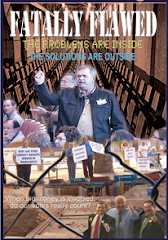
GUEST OPINION
By Phil Lopes
SPECIAL TO THE ARIZONA DAILY STAR
Tucson, Arizona | Published: 07.27.2009

The Congressional Budget Office testified last week that the proposals put forth by the Senate and House committees would not slow the rise of health care costs. Those proposals for health-care reform fail one of the two tests for real reform, namely to moderate and restrain the rate at which costs are rising.
Empirical evidence clearly shows that the one proposal that will restrain the rate is single-payer. Those who fear that single-payer is new and foreign, and therefore untested, need to be reminded that Medicare is, in essence, a single-payer system. For those who are eligible, Medicare is universal and identical, not means-tested and is administered by the government, which acts as a single-payer through contracts with the private sector to provide hospital and outpatient physician services.
Studies by both the Congressional Budget Office and the Government Accountability Office have repeatedly shown that single-payer universal health care would save significant dollars in administrative costs. As early as 1991, the GAO concluded that if the universal coverage and single-payer features of other countries, such as Canada, had been applied in the United States that year, the total savings (then estimated at $66.9 billion) "Would have been more than enough to finance insurance coverage for the millions of American who are currently uninsured."
More recently, estimates published in the International Journal of Health Services conclude that "streamlining administrative overhead to Canadian levels would save approximately $286 billion in 2002, $6,940 for each of the 41.2 million Americans who were uninsured as of 2001. This is substantially more than would be needed to provide full insurance coverage." At present, the U.S. spends 50- to 100-percent more on administration than countries with single-payer systems.
Single-payer gives the government greater leverage to control costs. A single-payer system would be able to take advantage of economies of scale and exert greater leverage in bargaining with providers, thereby controlling costs. Recent experiences with both the veterans' health system and that of Medicare Part D indicate the difference exerting such leverage can make.
The Department of Veterans Affairs uses its power as a major purchaser to negotiate prices with pharmaceutical makers. But when the legislation leading to the drug prescription plan (better known as Medicare Part D) was passed, Congress explicitly barred negotiating prices with drug makers.
The results of this are now becoming evident: at present, the VA is paying 46 percent less for the most popular brand-name drugs than the average prices posted by the Medicare plans for the same drugs.
Because Part D increased the demand for drugs without controlling costs, prescription drug prices have risen sharply: during the first quarter of 2006, prices for brand-name drugs "jumped 3.9 percent, four times the general inflation rate . . . and the largest quarterly price increase in six years," according to The New York Times.
Health-care costs will not decrease but the empirical and practical evidence clearly shows single-payer's ability to restrain cost increases. These reasons are in addition to fulfilling the other test of real reform, namely that such a system is the only way we can realistically afford to end the dangerous, embarrassing and worsening situation wherein about 47 million people in this country lack health insurance and tens of millions more are seriously under-insured.
We should all therefore urge Congress and the President to adopt a single-payer system, or make it the public option, without which neither cost moderation nor universal coverage will be achieved.
E-mail Rep. Phil Lopes at plopes@azleg.gov
















